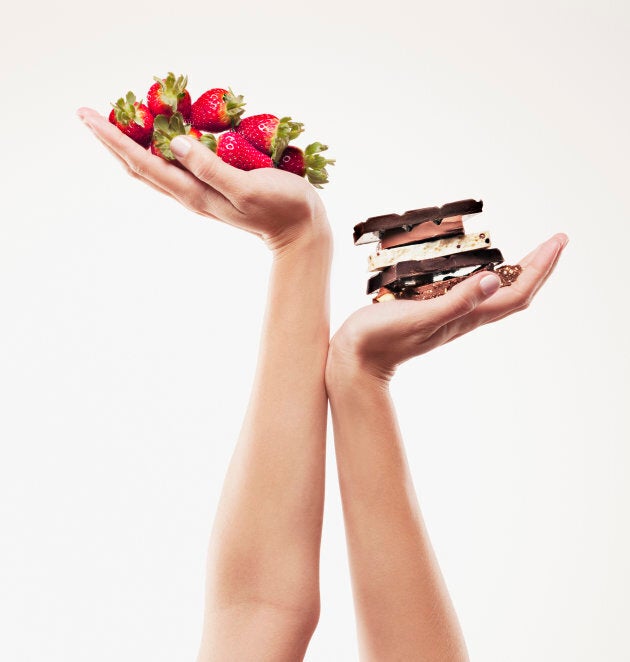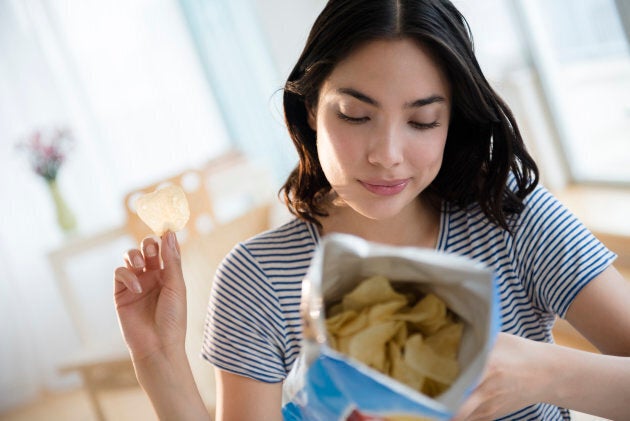Navigating the supermarket in order to find healthy foods can feel like an impossible feat -- there are confusing food labels, misleading buzzwords and an often oversimplified Health Star Rating system.
One area which often gets overlooked, by both shoppers and food manufacturers, is sugar content. While the sugar content in a bag of lollies is obvious, hidden sugars under various names lurk in unsuspecting items such as pasta sauce, salad dressings and sauces.
In fact, a new study by The George Institute for Global Health has revealed around 70 percent of packaged foods contain added sugar.
The findings highlight the need for "added sugar" to be declared on packaging and used in the Health Star Rating labelling system, Professor Bruce Neal of The George Institute told HuffPost Australia.
"What we're interested in is trying to figure out the best way for the Health Star Rating system to do a really good job. The rationale is that, in our view, [the system] gets things right for 85-90 percent of the time," Neal said.
"That said, obviously the Healthy Star Rating system needs to do better and we wanted to understand: is there a way we could help the underlying algorithm do a better job at giving good foods lots of stars, and giving bad things less stars."

One of the key criticisms has been related to sugar and the way the system oversimplifies sugar content in natural foods. Currently, only "total sugar" needs to be reported on nutrition information panels and used in the Health Star Rating calculation. However, this reduces the Health Star Rating on foods which contain natural sugars, such as milk, yoghurt, fruit and vegetables.
"Sugar is meant to be a substantial part of a healthy diet, but it's the good sugars -- those which make up fibres, the long chains of sugars -- which we want to be eating," Neal said.
"Added sugars are empty calories and a major contributing factor to the obesity epidemic and tooth decay. Australians would be much better off if they could quickly and easily see how much sugar has been added.
"For example, some breakfast cereals or muesli bars look healthy but actually have a lot of added sugars in them, but don't score as badly because they're counted as 'total sugars'. There's not enough differentiation between the two."

Using Australian Dietary Guideline definitions, The George Institute found 87 percent of "discretionary" foods (such as cakes, pies, ice cream, chips and biscuits) included added sugars, compared to 52 percent of "core" foods. These discretionary foods contained, on average, almost four times more added sugar than "core" foods like dairy products, bread and plain cereals like oats.
"We took the view that 'total sugars' is a poor proxy for what we really want -- which is 'added sugars'," Neal said.
"What we did was work out added sugars for about 35,000 products and re-ran the whole algorithm and asked: if we used 'added sugars' instead of 'total sugars', would it do a better job at discriminating between foods considered to be 'core' (things we should be eating lots of), versus food which are 'discretionary' (things we should not be eating so much of).
"Exactly as you would expect, we found if you use 'added sugars' in the algorithm, it does a much better job than using total sugars."

The change would also help shoppers sift though the countless names for 'sugar' to see whether the sugar in a product is added or naturally occurring.
"At the moment what we have to do is make our best guess at what the added sugars are, and that's a pretty laborious and time-consuming process. It lacks transparency and accountability," Neal said.
"We're advocating in the first instance that added sugars would be required on that nutrition information panel on the back. This would then enable people to see this, and the data would be readily available to calculate a Health Star Rating."
Accredited practising dietitian Chloe McLeod would welcome the change, she told HuffPost Australia.
"Highlighting added sugars in products is a great idea. This is much more useful than total sugars, as many foods naturally contain sugar, such as fruit or yoghurt," McLeod said.
"Highlighting what sugar has been added will hopefully help to make it clearer for people about which foods are the better choices.
"And keep in mind -- if it doesn't come in a packet (that is, a piece of fruit or vegetables), then it is usually going to be a healthier choice anyway."

Neal does highlight that looking beyond the Health Star Rating and looking closely at the nutrition information panel will give a clear idea of whether the product is healthy or not.
"Frankly, though, many consumers won't actually look at the back of the packets, but they will look at the Health Star Rating on the front because it's a single summary measure," Neal said.
"It's really important, therefore, that we get the summary right. We can only do that if we put into it the right information -- and total sugars, frankly, is not the best information to put into the algorithm to get the Health Star most accurately reflecting the healthiness of the food."
Now that we have this data on hidden sugar in food products, what next?
"The Government is pretty committed to the Health Star Rating program and has a built-in review process as it comes up to five years, which isn't for a little while yet," Neal said.
"They're now seeking submissions on all aspects of the Health Star Rating and how it might be improved, and we will most definitely be putting this research into that process so the government can consider it."
This isn't the only inquiry or action taken towards food manufactures not being clear about added sugar in their products. The ACCC has begun court action against Heinz over a sugary snack containing 60 percent sugar, which was marketed for toddlers.
ALSO ON HUFFPOST AUSTRALIA